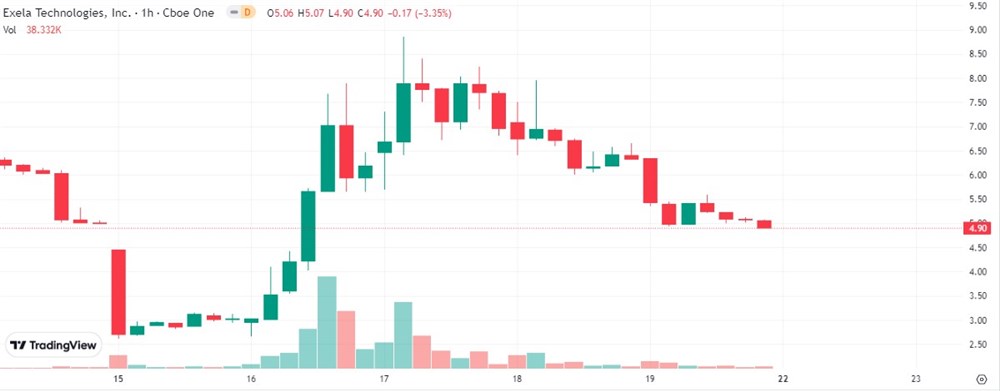Key Terms You Need to Know When Trading Low-Float Stocks

When it comes to trading low-float, small-cap stocks, many factors impact how the shares of these companies trade, which wouldn't otherwise affect a medium to large-cap stock. That's because these stocks' structure and mechanics differ entirely from larger capitalized stocks with a greater float size.
So, if you're investing, researching or trading a company with a small float size or market capitalization, you must know key terms and concepts to make informed decisions in the market.
A short squeeze might follow when all of the below concepts and terms are present in a particular stock trading abnormal volume. Before we get into an example, let's go over the basics.
Key Terms and Concepts
Market capitalization refers to the total value of a company's outstanding shares. To get this value, you multiply the number of outstanding shares of a public company by its share price. A company is considered to have a small cap when the total market cap is between $200 million and $2 billion. A micro-cap is a company with a market cap of less than $200 million.
The float of a company refers to the total number of shares that can be publicly traded. For example, if a company has a float of 20 million shares, 20 million is the total number of shares currently available to the public to buy and sell. A low float, a term very popular with day traders, refers to a company with few shares open to the public to buy and sell. A stock with a float under 10 million shares is typically considered a low float. Why do traders pay attention to this figure? It comes down to supply and demand. If a stock with a small float trades abnormal volume, that could lead to increased volatility and range, something day traders feed off.
The short interest in a stock represents the number of short shares sold against the stock. Regarding a low float and small-cap stock, a considerable short interest can lead to outlier volatility and range. That's because a significant short interest, similar to the size of the float, might greatly impact supply and demand. Typically 10 – 20% short interest is considered high, with a short interest over 20% being considered very high.
Short locate: If you want to short a stock but there is no availability to do so, the individual will need to request a "short locate." You request access from your broker to locate a specific amount of shares to go short a stock.
Hard-to-borrow (HTB) and easy-to-borrow (ETB): As it relates to locating shares to go short a stock, HTB is an inventory list that brokers use to identify which stocks are difficult to secure a locate on. These stocks might have no availability due to a small float structure or some availability at a premium price to locate. On the other hand, ETB is a list of stocks with locates readily available for a low cost or even free. Popular stocks with a medium to large float and market capitalization are typically ETB.
Short sale rule (SSR): The SSR is a rule imposed by the SEC that dictates whether a stock can be sold short. It came into effect to prevent short sellers from "hitting the bid" or piling onto a stock already down significantly on the day, potentially making matters worse. The SSR rule broadly dictates that once a stock falls more than 10% from its previous close, it goes onto SSR and may no longer be sold short on the bid for the remainder of the day and the following day. Low float stocks are typically highly volatile, so a 10% drop in share price is not out of the question. Therefore, it is vital to understand how this might impact the way you can trade an SSR stock.
For example, if a low float trending lower due to a considerable short interest growing intraday triggers SSR and begins to bounce higher, that might result in a short squeeze. On the flip side, if a stock is on SSR and a lot of volume is being done on the bid while the stock trends lower, that indicates that long holders are still selling their stock regardless of the decline.
Example of low float
During the week of May 15 – May 19, Exela Technologies (NASDAQ: XELA) saw its share price surge higher. This move came after the company announced a reverse split of 1-for-200, effective Friday, May 12.

On May 16, the stock was on SSR, trading post-split with a massively reduced float, small market capitalization, and widely available locates to short the stock. The combination of the above terms and concepts led to the share price of XELA surging higher.
As many small-cap, low-float day traders will tell you, the volatility experienced in XELA is not all that rare. When you have a company with a low float and small market cap, trading abnormal volume and easy access to locates, explosive volatility and the potential for an outlier short squeeze becomes probable.
More News
View More




Recent Quotes
View More
Quotes delayed at least 20 minutes.
By accessing this page, you agree to the Privacy Policy and Terms Of Service.